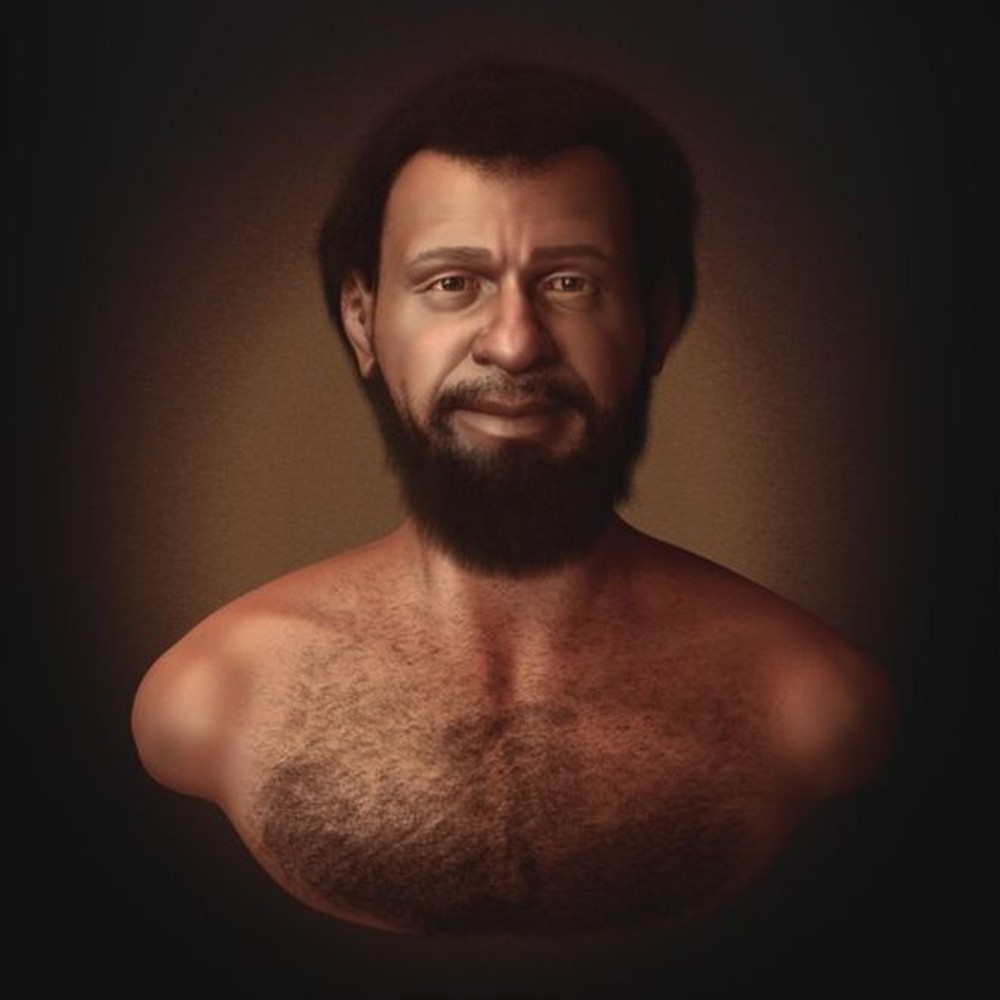What historians say about Jesus' true appearance Forget about long hair and blue eyes: for researchers, he had dark skin and eyes and short hair.
 pray centuries and centuries of Eurocentrism - both in art and in religion - to sediment the best known image of Jesus Christ: a white, bearded man with long light brown hair and blue eyes. Despite being a portrait already known by most of the approximately 2 billion Christians in the world, it is a construction that should have had little to do with reality.
pray centuries and centuries of Eurocentrism - both in art and in religion - to sediment the best known image of Jesus Christ: a white, bearded man with long light brown hair and blue eyes. Despite being a portrait already known by most of the approximately 2 billion Christians in the world, it is a construction that should have had little to do with reality.
The historical Jesus, experts say, was probably dark and short and kept his hair trimmed like the other Jews of his day.
The difficulty in knowing what Jesus looked like comes from the very basis of Christianity: the Bible, a collection of sacred books whose New Testament tells the life of Jesus - and the first developments of his doctrine - makes no mention of what it was like the way you look.
"In the Gospels he is not described physically, nor was he tall or short, well-mannered or strong." The only thing that is said is his approximate age, about 30 years, "comments New Zealand historian Joan E. Taylor, author of Newly Released Book What Did Jesus Look Like? and a professor in the Department of Theology and Religious Studies at King's College London.
"It seems to indicate that the early followers of Jesus did not care about such information, that for them it was more important to record the ideas and the talk of this guy than to say how he was physically," says the historian André Leonardo Chevitarese, professor of the History Institute of the Federal University of Rio de Janeiro (UFRJ) and author of the book Jesus History - A Brief Introduction.
In 2001, for a documentary produced by the BBC, the British forensic expert on facial reconstructions Richard Neave used scientific knowledge to arrive at an image that can be considered close to reality. From three first-century skulls, from ancient inhabitants of the same region where Jesus would have lived, he and his team recreated, using 3D modeling, what a typical face might well have been like for Jesus.
Skeletons of Jews of that time show that the average height was 1.60 m and that the vast majority of them weighed just over 50 kilos. The color of the skin is an estimate.
Illustration by expert Richard Neave for BBC documentary in 2001 (Photo: BBC) Illustration by expert Richard Neave for BBC documentary in 2001 (Photo: BBC)
Illustration by expert Richard Neave for BBC documentary in 2001 (Photo: BBC)
Taylor came to similar conclusions about the physiognomy of Jesus. "The Jews at the time were biologically similar to today's Iraqi Jews, so I believe he had dark brown to black hair, brown eyes, brown skin, a typical Middle Eastern man," he says.
"Certainly he was dark, considering the complexion of people of that region and, mainly, analyzing the physiognomy of men of the desert, people who live in the intense sun", comments the Brazilian graphic designer Cícero Moraes, specialist in forensic facial reconstitution with accomplished works for foreign universities. He has already done facial reconstruction of 11 Catholic saints - and created a scientific image of Jesus Christ at the request of the report.
"The best way to imagine the face of Jesus would be to look at some Bedouin from those desert lands, a nomadic wanderer from those lands punished by the inclement sun," says theologian Pedro Lima Vasconcellos, a professor at the Federal University of Alagoas and author of the book The Da Vinci Code and Early Christianity.
Another interesting question is the wig. In the Epistle to the Corinthians, Paul writes that "it is a dishonor for a man to have long hair." This indicates that Jesus himself had not had long strands, as he is usually portrayed.
"For the Roman world, the acceptable appearance for a man was short-bearded and short-haired. An ancient philosopher probably had short hair and perhaps left his beard unfinished," says historian Joan E. Taylor.
Chevitarese says that the earliest known iconographies of Jesus, dating back to the 3rd century, brought him as a beardless, short-haired youth. "It was much more the representation of a young philosopher, a teacher, than a bearded god," he points out.
"At the center of the paleo-Christian iconography Christ appears under various angles: his bearded face, as a philosopher or teacher, or beardless, with the Apollonian face, with the pallium or tunic, with the countenance of the sun god or the humble shepherd" , contextualizes researcher Wilma Steagall De Tommaso, a professor at the Pontifical Catholic University of São Paulo and the Museum of Sacred Art in São Paulo and a member of the Brazilian Society of Theology and Religious Sciences.
Images
Joan believes that the images that have consolidated over the centuries have always sought to portray the Christ, that is, the divine figure, the son of God - and not the human Jesus
Great reminder for looking into this media machine. I'd hate to be meeting the wrong Jesus EVER.
O homem de Nazaré. Valeu! Sucesso e boa sorte mais uma vez!!